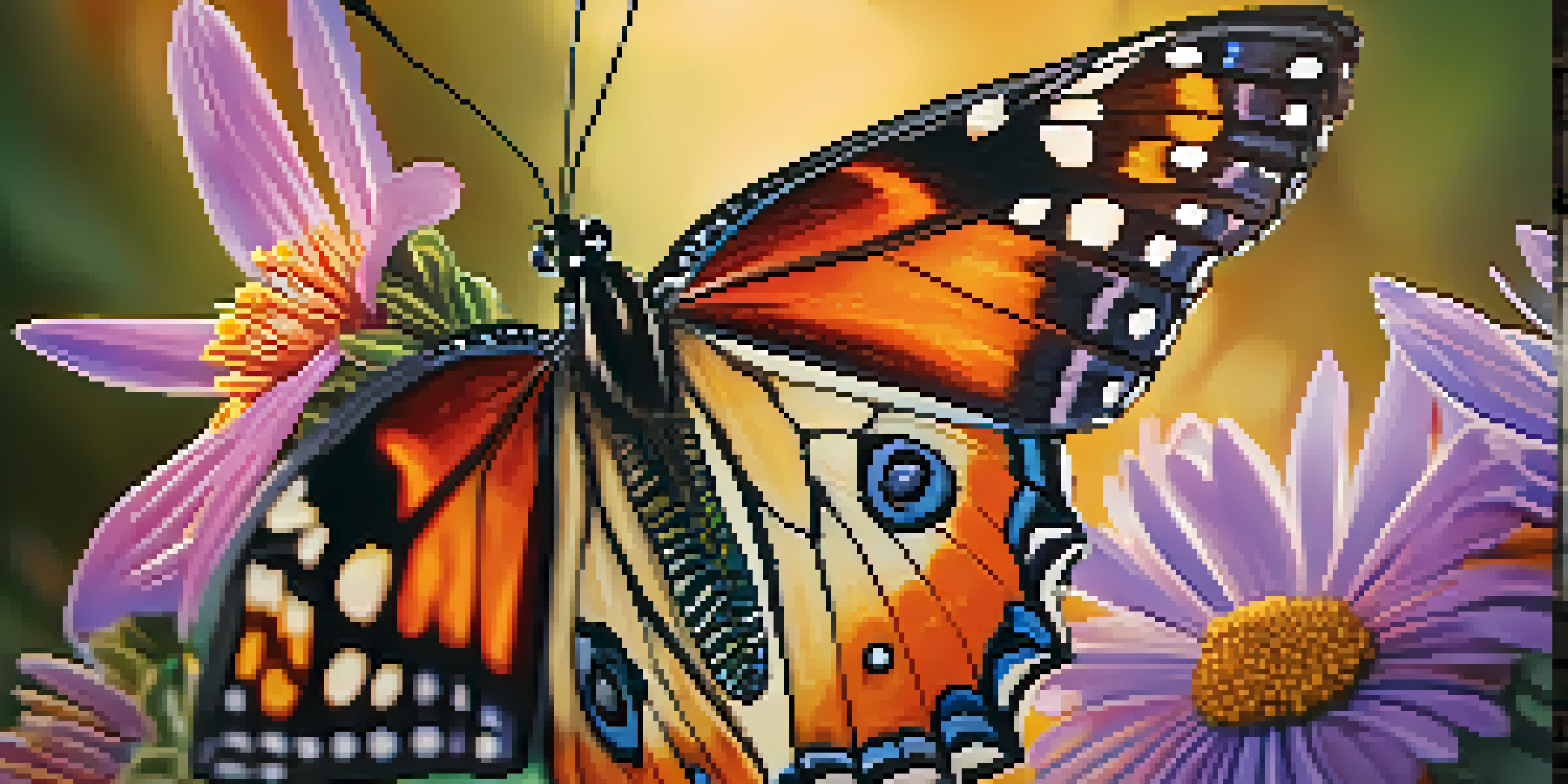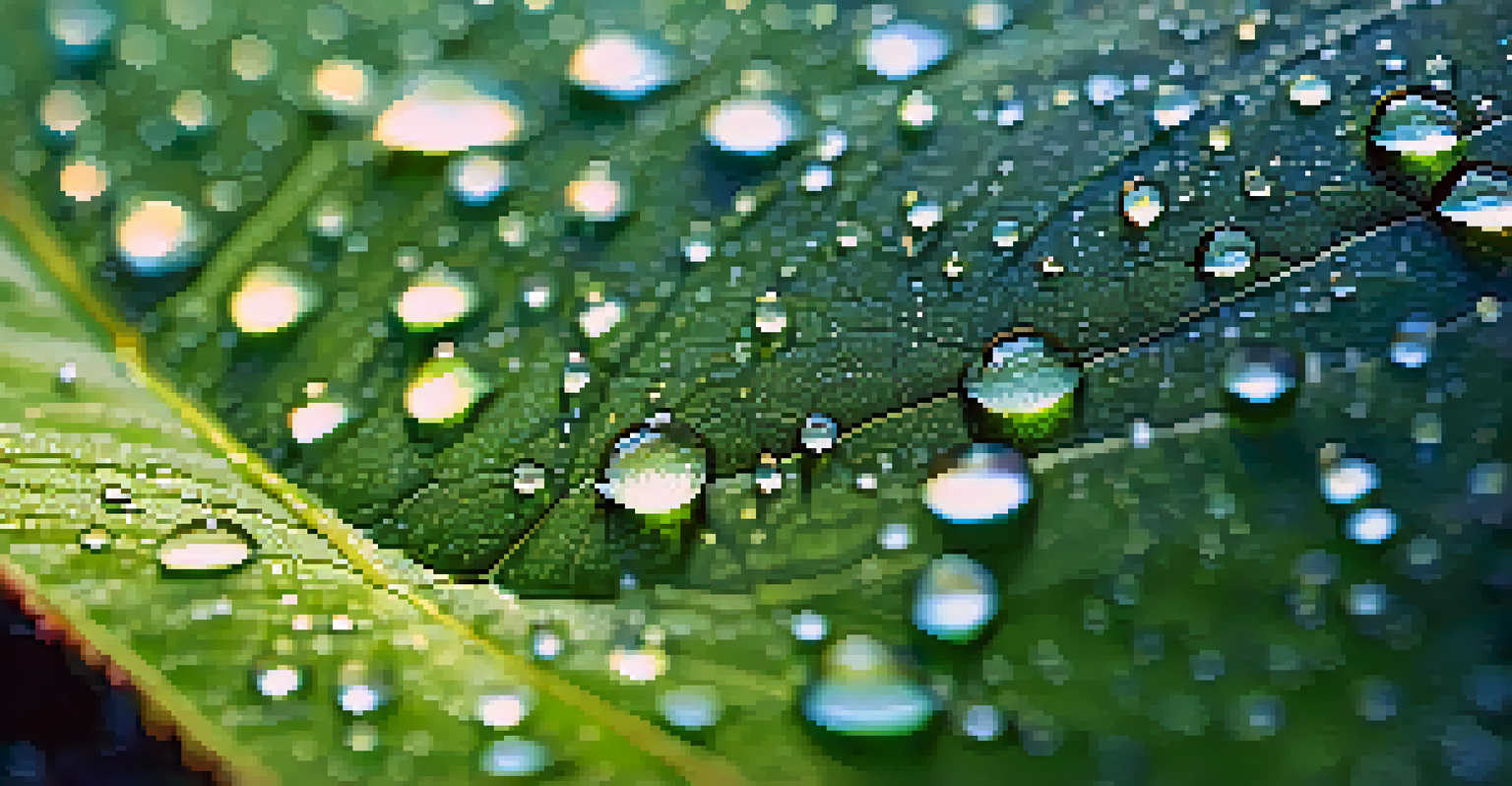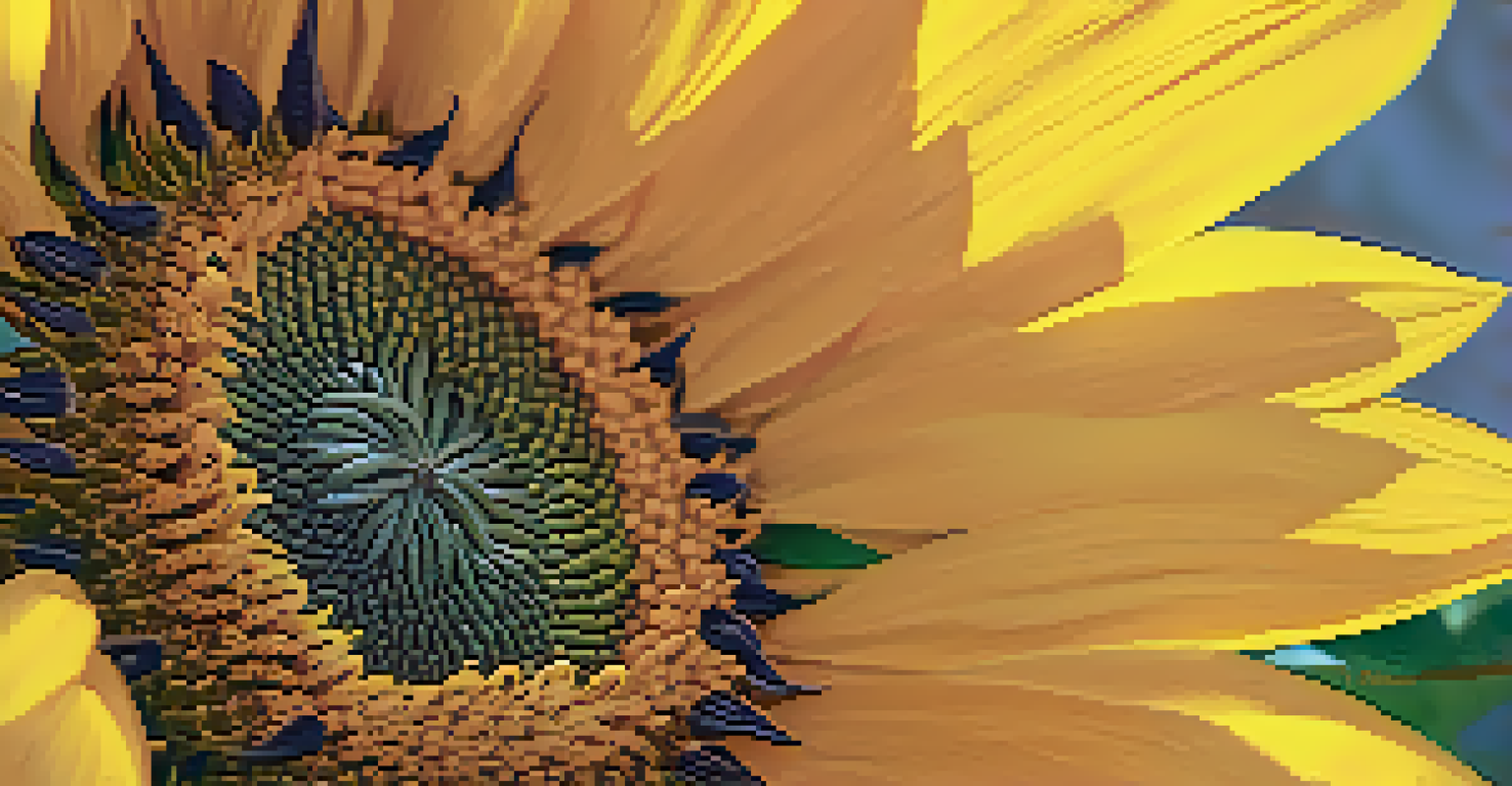Macro Photography Tips to Showcase Intricate Plant Details

Understanding Macro Photography and Its Importance
Macro photography is all about capturing the tiny details that often go unnoticed. It allows photographers to explore the intricate beauty of plants, revealing textures, colors, and forms that are simply stunning. This style of photography is not just about taking close-up shots; it's about telling a story through the details.
The camera is an instrument that teaches people how to see without a camera.
When you zoom in on a flower or leaf, you can highlight patterns and structures that contribute to the overall beauty of nature. Think of it as discovering a hidden world; what might seem mundane at a distance transforms into a vibrant masterpiece up close. This technique can elevate your photography and create captivating visuals.
Additionally, macro photography fosters a deeper appreciation for the natural world. It encourages you to look closely at the plants around you, transforming your perspective and igniting curiosity. By mastering macro photography, you can inspire others to observe the beauty that lies just beneath the surface.
Choosing the Right Equipment for Macro Shots
Selecting the right equipment is crucial for successful macro photography. While many cameras can capture close-ups, a dedicated macro lens can make a significant difference. These lenses are designed to focus closely and capture details that standard lenses might miss, allowing you to explore the intricate beauty of plants.

If you're just starting out, you don't necessarily need the most expensive gear. A simple extension tube can be attached to your existing lens to increase its magnification capability. It's a budget-friendly way to experiment with macro photography without a hefty investment. Plus, using your smartphone with a macro attachment can yield impressive results.
Importance of Macro Photography
Macro photography reveals the intricate beauty of plants, transforming ordinary views into stunning details.
Remember, the best equipment is the one that suits your style and comfort level. Experimenting with different setups will help you understand what works best for you. The goal is to find a balance between quality and accessibility, so you can focus on capturing those beautiful plant details.
Mastering Lighting Techniques for Macro Photography
Lighting is one of the most critical elements in macro photography. Natural light often works wonders, especially during the golden hour, when the sun casts a soft, warm glow. However, for intricate details, you may need to explore artificial lighting options, such as ring lights or diffused flash, to avoid harsh shadows.
Photography is the story I fail to put into words.
Experimenting with different angles and light sources can create unique effects. For instance, backlighting can illuminate the veins of a leaf, adding depth and dimension to your photos. Think of lighting as a paintbrush; it can dramatically change the mood and focus of your image, drawing attention to specific details.
Don't shy away from shadows either! They can add contrast and interest to your macro shots, highlighting textures and shapes. By understanding how light interacts with your subjects, you can create stunning images that truly showcase the beauty of plants.
Finding the Perfect Composition for Plant Photography
Composition is key in any form of photography, and macro shots are no exception. The rule of thirds is a great starting point, helping you create balanced and engaging images. Imagine dividing your frame into a grid; placing your subject off-center can lead to a more dynamic photograph that invites the viewer's eye.
Additionally, consider the background of your shot. A cluttered background can distract from the main subject, while a soft, blurred backdrop can enhance your plant's details. Look for natural settings or use materials like fabric to create a clean background that complements your subject.
Essential Equipment Choices
Using the right equipment, like a macro lens or extension tubes, enhances your ability to capture detailed close-ups.
Lastly, don’t be afraid to experiment with angles and perspectives. Shooting from above, below, or even at a slight angle can reveal new details and create a more engaging composition. The beauty of macro photography lies in the ability to explore, so have fun and see what unique angles you can capture!
Using Depth of Field to Highlight Details
Depth of field (DoF) refers to the range of distance in a photo that appears sharp. In macro photography, a shallow depth of field can isolate your subject, drawing attention to intricate details while softly blurring the background. This technique creates a pleasing visual effect, making your plant stand out beautifully.
To achieve this, use a wide aperture (a low f-number), which allows more light to hit the sensor and creates that dreamy background blur. However, be mindful of your focus point; with a shallow DoF, even a slight movement can throw your subject out of focus. Practicing your focus technique will help you hone in on those delicate details.
Balancing depth of field with sharpness is essential. Sometimes, you may want to capture more of the plant in focus, so adjusting your aperture accordingly can help. Ultimately, mastering depth of field will enhance your macro photography, allowing you to create impactful images that showcase the beauty of plants.
Patience: The Key to Successful Macro Photography
Patience is a virtue, especially in macro photography. Taking the time to observe your subject can lead to stunning results. Plants often move with the wind, and insects may dart away unexpectedly, so waiting for that perfect moment is essential. Embrace the stillness and enjoy the process of capturing nature's beauty.
Consider setting up your shot ahead of time and then waiting for the right light or moment. This can be especially rewarding when photographing pollinators like bees or butterflies, as you can capture them in action. The anticipation adds a layer of excitement to your photography adventure.
Mastering Lighting and Composition
Effective lighting techniques and thoughtful composition are key to creating captivating macro images that highlight plant details.
Moreover, patience helps build your skills. The more you practice, the better you'll understand your equipment and the behavior of your subjects. Over time, you'll learn to anticipate the right moments, making your macro photography journey even more rewarding.
Post-Processing Tips to Enhance Your Macro Images
Once you've captured your macro shots, post-processing can elevate your images to the next level. Basic adjustments like cropping, brightness, and contrast can make a significant difference. Consider using software like Lightroom or Photoshop to refine your images and bring out the details you want to highlight.
One useful technique is sharpening, which enhances the edges of your subject and can make the intricate details pop. However, be careful not to overdo it, as this can lead to unnatural-looking images. A subtle touch is often best to maintain the beauty of your original shot.

Additionally, experimenting with color correction can enhance the vibrancy of your plants. Adjusting hues and saturation can bring out the rich colors that make your macro images so captivating. With a little practice, you'll find that post-processing is an exciting way to express your creativity and showcase your unique style.